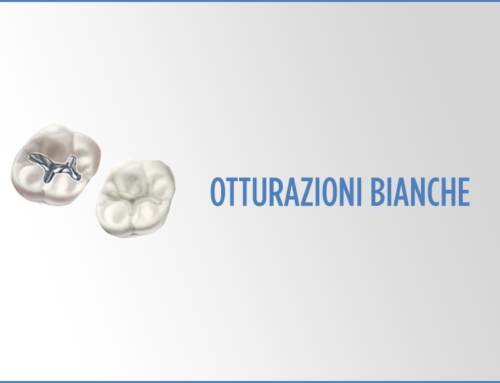Oral Health: More Than Just Teeth and Gums
Oral health is not just about teeth and gums but also includes the surrounding tissues. One of the most common issues is EO Lesions (Endodontic Odontogenic Lesions or Endodontic-Origin Lesions), which appear as radiolucencies in X-rays at the apex of tooth roots. These lesions are caused by infections or necrosis of the dental pulp. Although they can sometimes be asymptomatic and become chronic, they have the potential to develop into more severe infections. For this reason, a specialist check-up is essential.
What Are EO Lesions?
Endodontic Odontogenic Lesions are bone pathologies adjacent to the tooth roots that arise from endodontic issues, such as:
– Dental abscesses
– Granulomas
– Radicular cysts
– Bone resorption due to chronic infections
These lesions result from an infection caused by pulpal necrosis, which is the death of the tooth’s internal tissue due to deep cavities, trauma, fractures, cracks, or incomplete root canal treatments.
Why Is a Specialist Check-Up Important?
Many patients are unaware of the presence of an EO lesion because these lesions often do not cause noticeable symptoms until the infection worsens or becomes acute. Undergoing a specialist visit allows for:
1. Preventing Serious Complications
If left untreated, EO lesions can develop into acute infections, increasing the risk of abscesses, severe pain, and swelling.
2. Avoiding Tooth Loss
Early detection of an endodontic lesion enables conservative treatments, such as root canal therapy, which can save the tooth and prevent extraction.
3. Maintaining Overall Health
Untreated dental infections can spread to surrounding tissues or, in severe cases, to the rest of the body, leading to systemic complications. Pathogenic microorganisms present in these infected tissues can migrate to other areas of the body, utilizing the bloodstream as a pathway.
How Are EO Lesions Diagnosed?
A thorough evaluation is always necessary, involving:
– A specialist clinical examination
– Intraoral and panoramic X-rays to identify any apical radiolucencies; it is also helpful to compare recent X-rays with previous ones, so always keep your X-rays, as they may be important.
– Pulp vitality tests to assess the condition of the dental pulp.
Depending on the diagnosis, treatment may include endodontic therapy (root canal treatment), surgical removal of the lesion, or other personalized solutions to preserve the tooth and overall oral health.
When Should You Have a Check-Up?
It is advisable to undergo a biannual dental specialist check-up, especially in the presence of symptoms such as:
– Persistent or throbbing tooth pain
– Swelling or localized gum redness
– Increased sensitivity to hot or cold
– Presence of fistulas or pus discharge near a tooth
– Lesions detected via X-ray
Many guidelines recommend preoperative dental screening for patients awaiting elective cardiovascular surgery to minimize the risk of infectious complications associated with these procedures. https://www.asso-odontoiatria.it/wp-content/uploads/2023/01/SCREENING-DENTALE-PER-CHIRURGIA-CV.pdf
Prevention Is the First Step to Oral Health
If you experience any suspicious symptoms or wish to have a thorough endodontic evaluation, our team is available for a specialist consultation. Book your appointment today and take care of your oral health and smile with the highest level of professionalism and attention.
Frequently Asked Questions (FAQ)
1. Do LEOs always cause pain?
No, LEOs are often asymptomatic and are only detected through radiographic examinations. However, if the infection worsens, symptoms such as pain and swelling may appear.
2. How can I tell if I have a LEO?
The only way to diagnose LEOs with certainty is through a specialist dental visit with radiographic examinations. Some warning signs may include persistent pain, tooth sensitivity, gum swelling, and fistulas with pus discharge.
3. Can LEOs heal on their own?
No, a LEO does not heal spontaneously. If left untreated, it can worsen over time, leading to more severe infections or tooth loss.
4. What are the treatments for LEOs?
The treatment depends on the severity of the lesion and may include endodontic therapy (root canal treatment), surgical removal of the lesion, or, in severe cases, tooth extraction.
5. Can LEOs be prevented?
Yes, good oral hygiene, regular dental check-ups, and timely treatment of cavities and dental trauma can reduce the risk of developing LEOs.
6. How often should I have a check-up to prevent LEOs?
It is recommended to have a dental check-up at least every six months, even in the absence of symptoms, to detect any potential issues early.
7. If I have a LEO, does the tooth always need to be extracted?
No, in most cases, the tooth can be saved with appropriate endodontic treatment. Extraction is only necessary in severe cases when the lesion is too extensive, or the tooth is irreparable.
8. Can LEOs cause general health problems?
Yes, if left untreated, endodontic infections can spread to surrounding tissues and, in severe cases, throughout the body, increasing the risk of systemic complications.
9. If I have no symptoms, do I still need to get checked for LEOs?
Yes, since many LEOs are asymptomatic, regular check-ups are essential to detect potential problems before they become severe.
10. What is the best way to avoid endodontic issues?
Maintaining good daily oral hygiene, having regular check-ups, and promptly addressing cavities or dental trauma can help prevent LEOs and other dental conditions.



